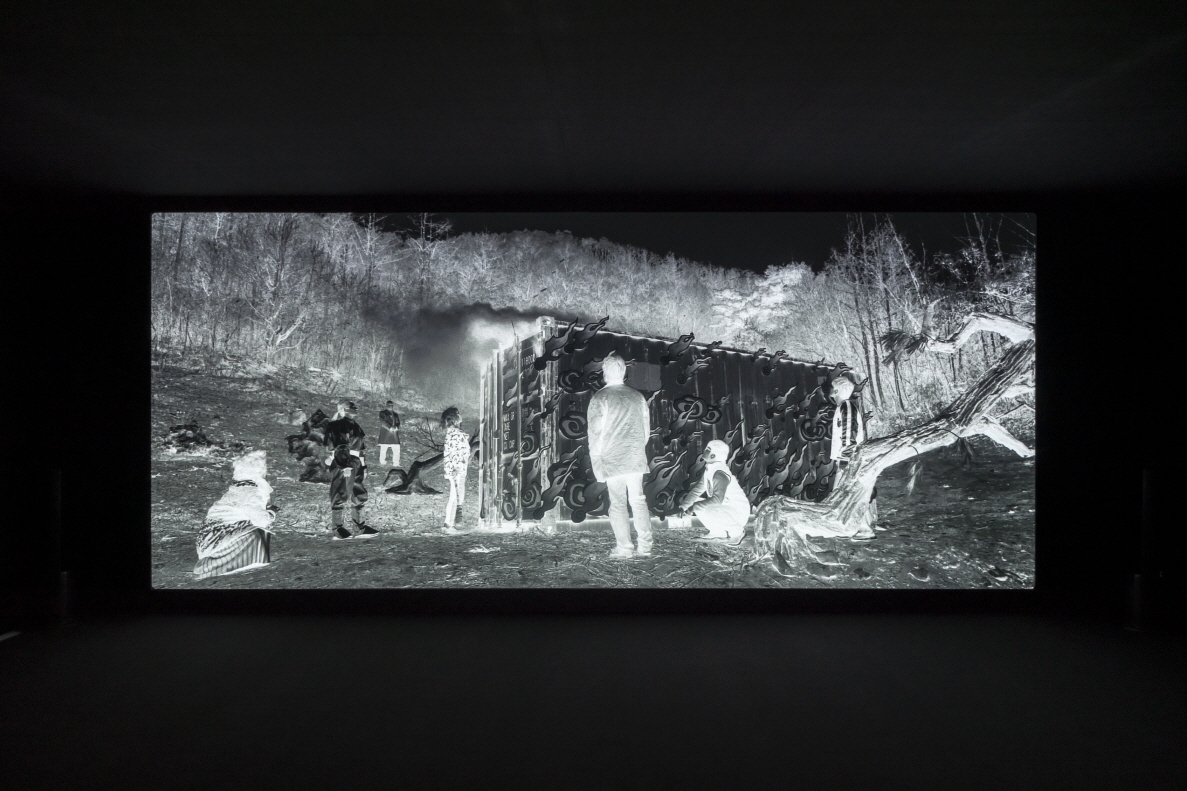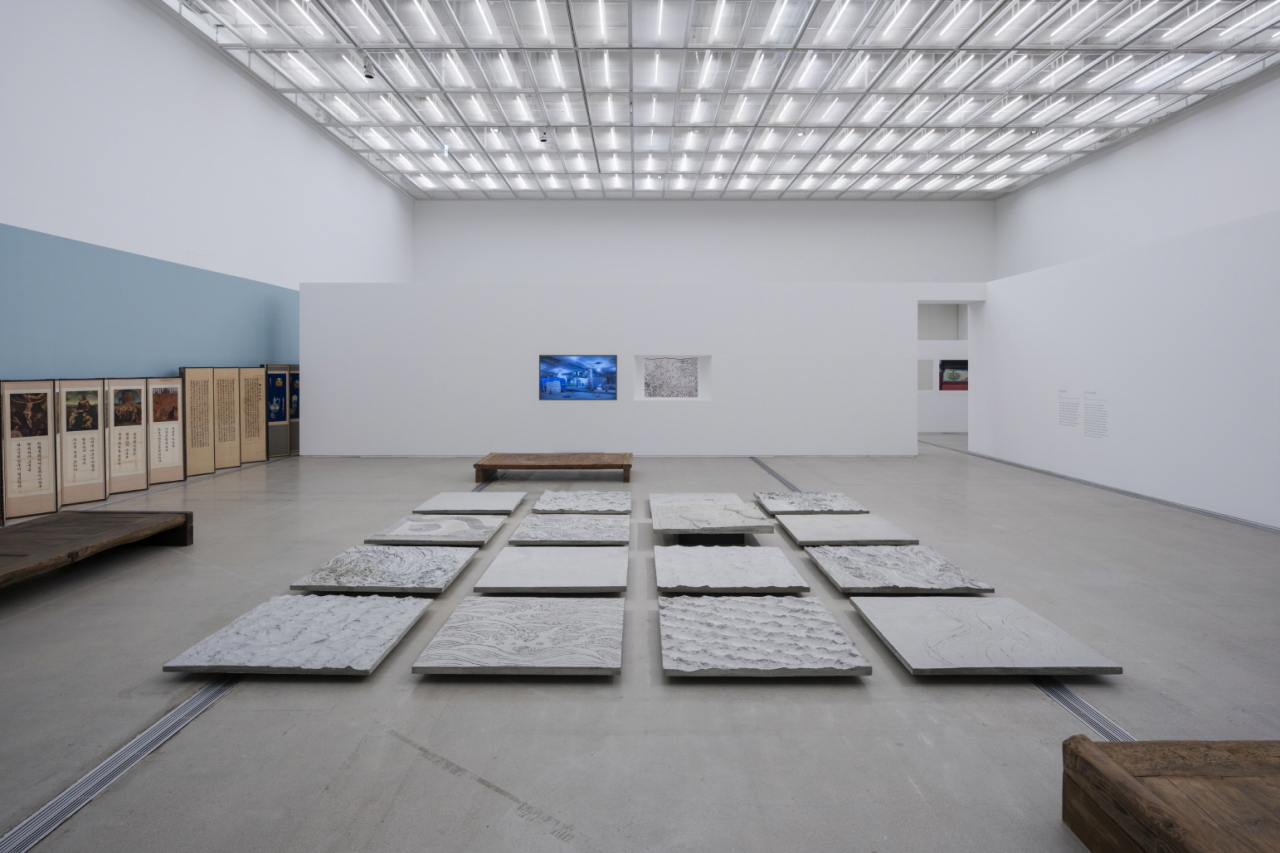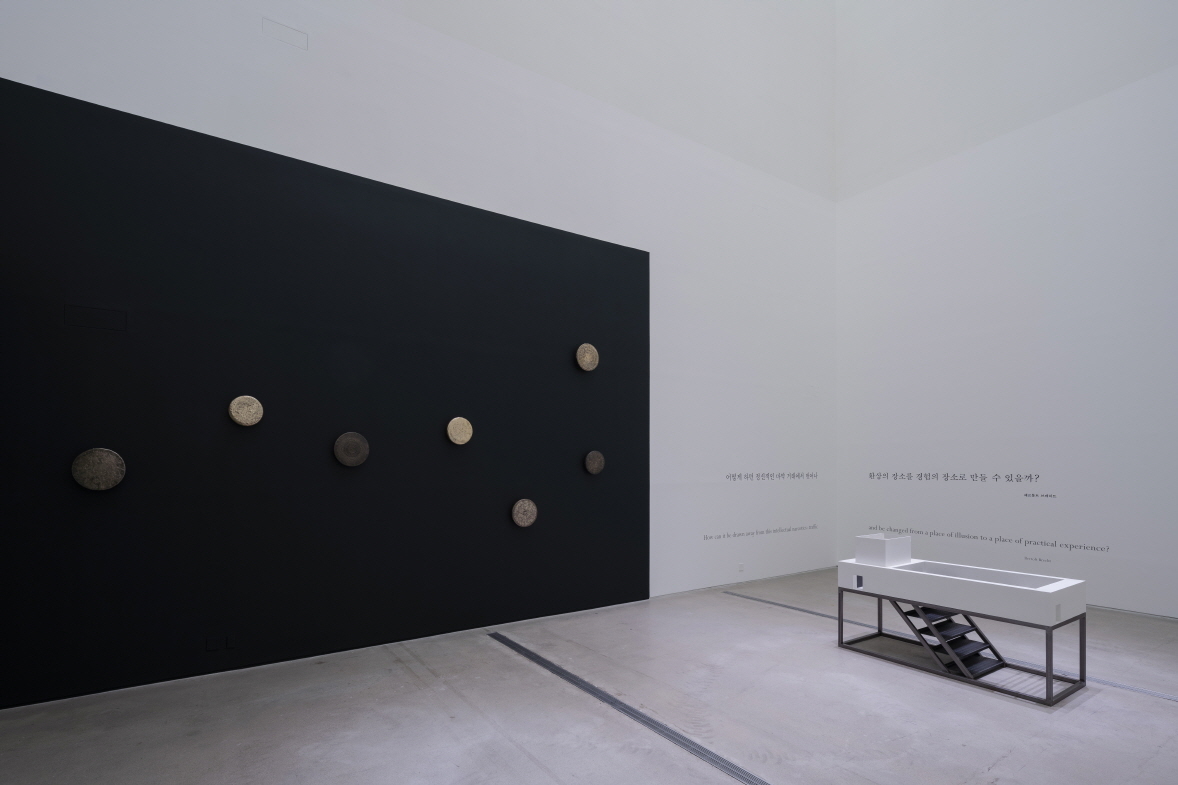Park Chan-kyong’s solo exhibition “Gathering” is an exhibition that explores what art museums can become in the contemporary world with constant man-made disasters.
On Saturday, the National Museum of Modern and Contemporary Art kicked off a solo exhibition of Park, who has been selected as sixth artist of the MMCA Hyundai Motor Series, a 10-year series of solo exhibitions featuring prominent Korean artists, sponsored by Hyundai Motor.
“What art language can be possible after disasters like the Fukushima disaster or the Sewol ferry disaster?” Park said in a statement about the exhibition.
 |
A scene from Park Chan-kyong’s 55-minute video work “Belated Bosal” (2019) (MMCA) |
According to Park, museums have the potential to become “places of hope,” not just because they are places to show art but more so because they are places where people can gather and share ideas.
“I wanted to propose that museums are one of the few places left in the contemporary world where individuals can gather together, away from political, social and economic interests,” Park said during a brief interview with The Korea Herald on Monday at the National Museum of Modern and Contemporary Art in Samcheong-dong area.
In his latest solo exhibition, Park once again borrows various elements from Korea’s traditional culture, shamanism tradition and religious rituals.
Since “Sindoan” in 2008, Park has been examining Korea through Korean folk religion and shamanism, creating video works and films such as “Anyang, Paradise City,” “Manshin: Ten Thousand Spirits” and “Citizen’s Forest.”
In “Gathering,” Park proposes a rite as a site that allows people to come together and form a community, with no specific interest or purpose.
In “Belated Bosal,” Park uses scenes taken from paintings that depict nirvana and the story of Maha Kasyapa, Gautama Buddha’s chief disciple who was late in getting to Buddha’s cremation.
“The gist of the Buddha’s nirvana is that people formed a community by gathering upon his death,” Park said.
Having started with paintings of the Buddha’s nirvana, the narrative of “Belated Bosal” alternates between a middle-aged woman wandering through the mountains and another woman who hikes through the mountains to measure radioactive contamination. Both women find themselves among others at the end.
The 55-minute film makes use of black and white negatives to suggest the world after disasters, including the Fukushima nuclear disaster.
According to Park, people are playing god with science. Disasters follow as a consequence, yet we are unable to save ourselves.
“Fukushima, Autoradiography” is another video work comprising a set of photographs that show empty landscapes after the catastrophe, juxtaposed with images showing the radioactive contamination of organisms living there.
The slideshow of Fukushima is paired in a dark room with “Sets,” which presents images taken from the Joseon Film Studio of North Korea, a film set of Joint Security Area and the Military Street Fighting Training Camp.
 |
An installtion view of Park Chan-kyong’s “Water Mark“ at the MMCA’s main branch in Samcheong-dong area, central Seoul (MMCA) |
Park also makes a loose allusion to the Sewol ferry disaster in “Water Mark,” which in Buddhism originally refers to the sea water that reflects everything in the world. Park’s “Water Mark,” which comprises 16 cement panels that describe the ocean water, however, shows the state in which the water can no longer reflect the world.
Wooden decking surrounds “Water Mark” for people to sit on. The museum will hold five discussion sessions there.
 |
An installation view of the last section of Park Chan-kyong’s exhibition ”Gathering“ at the MMCA’s main branch in Samcheong-dong area, central Seoul (MMCA) |
“Gathering” ends with a section where Park shows a miniature version of the exhibition hall, a device aimed at making the visitors step back and rethink the museum space and function.
The miniature is accompanied by Bertolt Brecht’s quote, “How can it be drawn away from this intellectual narcotics traffic and be changed from a place of illusion to a place of practical experience.”
The exhibition runs through Feb. 23, 2020.
By Shim Woo-hyun (
ws@heraldcorp.com)










